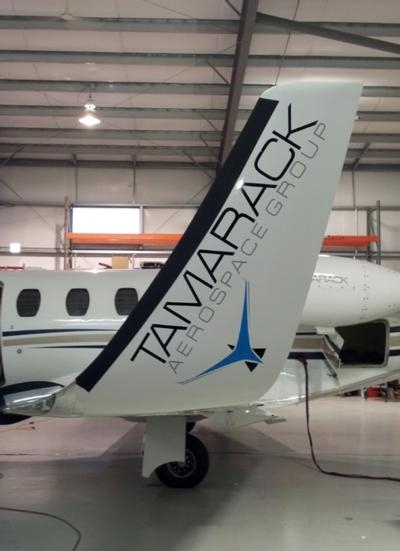NTSB Accepts Company's Evidence, Retracts Full Blame and Shrugs
Tamarack Aerospace Group has highlighted an NTSB reversal of a finding that blamed the manufacturer for an accident that occurred with a modified Cessna Citation 525 in 2018, acknowledging the firm's submitted evidence.

The new updated report isn't quite the exculpatory, scot-free release that cursory glance may give. Instead, it's more of a reassignment of blame, a bureaucratic shrug that unloads 100% of the guilt from Tamarack's shoulders without placing it anywhere else. Without a better hypothesis as to what caused the fatal crash, it's about as good as anyone can hope for at this point in time, barring some new breakthrough in the case. The older Aviation Investigation Final Report had blamed the Tamarack Active Technology Load Alleviation System (ATLAS), and Tamarack Active Camber Surfaces (TACS), modifications made to the aircraft. The systems, being autonomously actuated and computer-governed additions to the aircraft, became easy culprits while investigating the issue.
The accident was quite striking, featuring an aircraft that was climbing at 230+ knots in a climb through 3,000 ft MSL that abruptly and uncommandedly banked to the left at 5º per second. After the autopilot disconnected, the aircraft continued its climb to 6,100 ft, before beginning a rapid descent, quickly banking to the left at 90º. Only 23 seconds had passed since the A/P disconnected when the pilot issued a mayday call, stating he was unable to gain control of the aircraft.
In the NTSB's original report, they believed that the blame lay with an 'asymmetric deployment of the TACS, where the system essentially put in an unretractable leftward aileron command that the pilot could not disable. As proof, they cited a range of witness marks, most particularly finding 'the left TACS in a position consistent with trailing edge up' as the right TACS remained neutral. This finding, of course, was a true threat to Tamarack's bottom line, capable of devastating their good name as purveyors of safe, reliable, and high-class modifications to beloved business aircraft. As such, the company went to work in an effort to clear their name, issuing a petition to reconsider. Tamarack said the NTSB report contained "key erroneous findings", and "factual errors" they described as "significant." The end result of their own provided evidence would exonerate the TACS and ATLAS system, as they believed "the cumulative effect of the errors is to clearly demonstrate that there is no evidence that
ATLAS was in any way responsible for the accident."
The NTSB more or less agreed, revising their final report and dialing back the blame on Tamarack. They don't quite name the true culprit of the 2018 accident, but now state that "the available evidence for this accident does not sufficiently show that the ATLAS was the cause of the in-flight upset from which the pilot was unable to recover." This is a good enough win for Tamarack, who can now play up their acquittal, even if it only really amounts to moving the slider from 'guilty' to "who knows?". Tamarack manages to make a pretty good defense for themselves, with plenty of in-house legwork and testing done to clear their name. The report is worth viewing in its entirety to see the investigation process - at the end of the day there's no real answer to what downed N525EG.
 ANN's Daily Aero-Term (05.05.24): Omnidirectional Approach Lighting System
ANN's Daily Aero-Term (05.05.24): Omnidirectional Approach Lighting System Aero-News: Quote of the Day (05.05.24)
Aero-News: Quote of the Day (05.05.24) Airborne 05.06.24: Gone West-Dick Rutan, ICON BK Update, SpaceX EVA Suit
Airborne 05.06.24: Gone West-Dick Rutan, ICON BK Update, SpaceX EVA Suit Airborne 05.03.24: Advanced Powerplant Solutions, PRA Runway Woes, Drone Racing
Airborne 05.03.24: Advanced Powerplant Solutions, PRA Runway Woes, Drone Racing Aero-News: Quote of the Day (05.06xx.24)
Aero-News: Quote of the Day (05.06xx.24)



